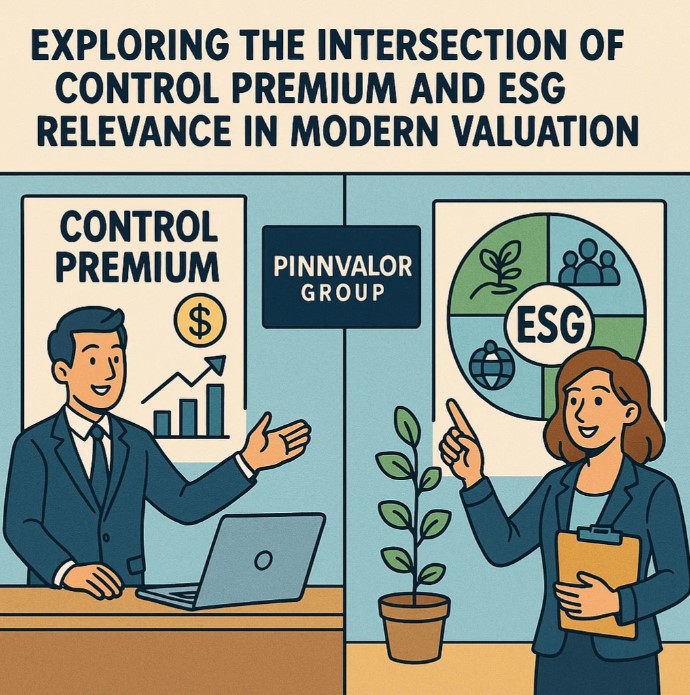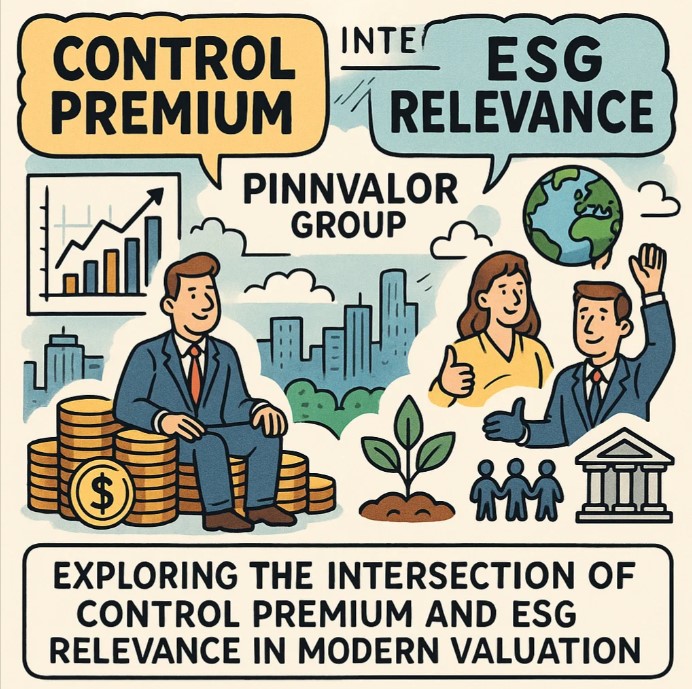
Exploring the Intersection of Control Premium and ESG Relevance in Modern Valuation
In today’s rapidly evolving business environment, the way investors assess the value of a company is undergoing significant transformation. Traditional valuation factors such as cash flow, growth prospects, and risk remain important—but non-financial factors, particularly those related to Environmental, Social, and Governance (ESG) practices, are increasingly influencing investment decisions. At the same time, the concept of control premium—the additional value a buyer is willing to pay to gain control of a company—continues to play a central role in mergers and acquisitions (M&A).
Can strong ESG performance unlock a higher control premium in today’s M&A landscape?
Modern valuation is no longer blind to ethics and impact. Strong ESG performance can be a silent multiplier in deal premiums.
So, how do these two concepts—control premium and ESG—interact in modern valuation frameworks? Can strong ESG performance increase a company’s control premium? Let’s explore.
What is a Control Premium?
A control premium is the amount a buyer is willing to pay over the current market price of a company to acquire a controlling interest—typically more than 50% of voting shares. This premium reflects the value of the control rights, including:
- The ability to make strategic decisions
- Replacing management
- Restructuring operations
- Reallocating capital
- Driving synergies post-acquisition
Control premiums are common in private equity, corporate takeovers, and strategic acquisitions where the acquirer expects to generate additional value through control.
What is ESG Relevance in Valuation?
Environmental, Social, and Governance (ESG) factors are a set of non-financial performance indicators that reflect a company’s long-term sustainability and ethical impact. ESG has become a key component of modern investment analysis due to growing regulatory pressure, stakeholder expectations, and evidence that ESG-aligned companies may outperform over the long term.
Key ESG dimensions include:
- Environmental: Climate impact, resource use, emissions
- Social: Labor practices, community impact, diversity
- Governance: Board independence, shareholder rights, transparency
From a valuation perspective, ESG relevance means that companies with strong ESG performance may:
- Lower risk premiums due to better risk management
- Command valuation uplifts due to brand reputation and stakeholder trust
- Attract a broader base of investors, particularly institutional ESG funds

The Convergence: How ESG Influences Control Premium
1. ESG as a Value Enhancer
Companies with robust ESG profiles are increasingly seen as lower-risk, better managed, and more future-ready. Acquirers may be willing to pay a higher control premium for such companies because:
- They face fewer regulatory and reputational risks
- They are better positioned to attract ESG-conscious customers, investors, and talent
- ESG practices are often linked to operational efficiency and long-term value creation
Thus, ESG can be a value enhancer, boosting both baseline valuation and control premium.
2. Control as a Catalyst for ESG Transformation
Conversely, acquirers may also see control as a way to improve a target’s ESG performance. In this scenario, a lower ESG score might depress the initial valuation—but the potential for transformation creates upside.
For example, a private equity firm with strong ESG credentials may identify a poorly governed target and see an opportunity to:
- Install an independent board
- Implement sustainability initiatives
- Improve diversity and social policies
Here, the control premium reflects both strategic and ESG transformation potential.
3. Market Trends and ESG Integration
Recent M&A trends show that ESG considerations are now factored into due diligence, pricing, and post-merger integration. Buyers are asking questions like:
- How carbon-intensive is the target’s supply chain?
- Does the board reflect diverse perspectives?
- Are there hidden ESG liabilities (e.g., legal or environmental risks)?
Failure to meet ESG standards can reduce the buyer’s willingness to pay a premium—or even derail a deal entirely. On the other hand, exceeding ESG benchmarks can justify a significant control premium.
Challenges in Measuring the ESG-Control Premium Link
While the logic is strong, measuring the exact impact of ESG on control premiums is complex. Challenges include:
- Data Inconsistency: ESG scores vary by provider, methodology, and sector.
- Attribution Difficulty: It's hard to isolate ESG’s role in premium calculations when many factors are at play.
- Temporal Misalignment: ESG benefits often materialize over the long term, while control premiums reflect immediate transaction expectations.
Still, case studies and empirical research are beginning to support the notion that ESG maturity is positively correlated with deal attractiveness and premium outcomes.
Implications for Investors and Dealmakers
- Integrate ESG in Due Diligence: Treat ESG as a core part of the valuation and risk assessment process—not an afterthought.
- Reassess Control Premium Calculations: Consider ESG strengths or weaknesses when determining appropriate premiums.
- Be Strategic with ESG Turnarounds: Targets with ESG gaps can offer value-creation opportunities—if the acquirer has the vision and capability to lead transformation.
- Communicate ESG Vision Post-Acquisition: Stakeholders want to see how control will be used to enhance sustainability and governance.
Conclusion
In the age of sustainable investing, control premium and ESG relevance are no longer isolated factors. They are increasingly intertwined—each influencing the other in shaping how companies are valued, acquired, and grown. As more investors and acquirers recognize this connection, those who can skillfully navigate both financial and ESG dimensions will be best positioned to unlock long-term value in the modern M&A landscape.
| Framework | Focus | Integration Level |
|---|---|---|
| ISSB (IFRS S1 & S2) | Sustainability & climate-related disclosures | Designed for inclusion in financial filings |
| GRI | Broad ESG impacts (stakeholder-focused) | Complementary to financial reports |
| SASB | Financial materiality by industry | Often included in 10-K or MD&A sections |
| TCFD | Climate-related risks/opportunities | Basis for climate disclosures in financial reports |
| CSRD (EU) | Mandatory ESG disclosures | Part of annual reporting requirements |
Challenges in ESG-Financial Integration
Despite the momentum, companies face several challenges:
- Data Availability & Quality: Collecting consistent, accurate ESG data remains a hurdle.
- Assurance and Auditability: Verifying ESG metrics for financial inclusion is still evolving.
- Comparability: Diverse risks across industries/geographies make standardization complex.
- Capacity and Expertise: Finance teams must learn to interpret and report non-financial risks.
The Road Ahead
As ESG reporting frameworks mature, we can expect:
- Greater alignment between sustainability and financial accounting standards
- Wider adoption of mandatory ESG disclosures globally
- Increased assurance and audit standards for ESG data
- More robust tools for data collection, monitoring, and reporting
Eventually, ESG data will be viewed not as a separate set of metrics but as a critical extension of a company’s financial health and future performance.
Conclusion
The evolution of ESG reporting frameworks marks a fundamental shift in corporate transparency and accountability. From fragmented, voluntary disclosures to integrated, regulated financial reporting, ESG is now a strategic imperative.
